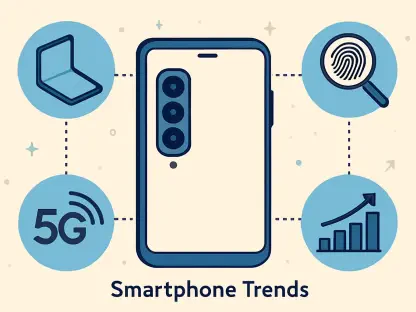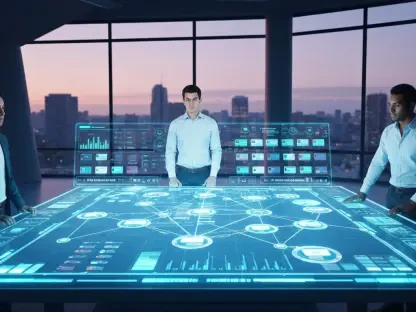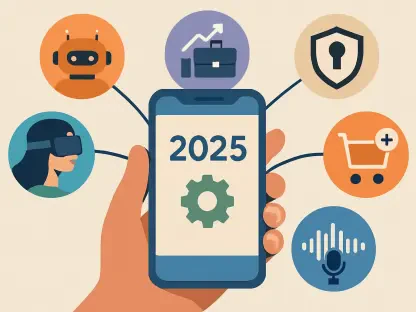What if your next doctor’s visit, classroom lesson, or shopping spree could all take place in a virtual environment as vivid and immersive as the real world? The technological advancements in Extended Reality (XR) are rapidly transforming industries and changing how we experience daily activities. From healthcare to education, retail to entertainment, XR promises a future where the lines between digital and physical realms blur.
Importance of XR Technologies
Extended Reality stands as one of the most exciting and transformative developments of the 21st century. XR encompasses Virtual Reality (VR), Augmented Reality (AR), and Mixed Reality (MR), each offering unique ways of enhancing or altering our perception of the world. This convergence of virtual and physical realities is not only reshaping technological landscapes but also responding to broader societal trends toward increasing digitization in professional and personal environments.
Healthcare Revolution
XR technologies are revolutionizing the healthcare sector. VR allows medical professionals to practice complex surgeries in safe, virtual environments before performing them on patients. AR applications help surgeons visualize 3D images of internal organs during procedures, enhancing precision and reducing risks. In rehabilitation, patients with PTSD, phobias, and anxiety benefit from VR-controlled therapeutic environments, transforming recovery processes.
Dr. Samantha Riley, a leading surgeon, notes, “AR-assisted visuals during surgeries have drastically improved our accuracy and patient outcomes, leading to a more efficient and safer healthcare experience.”
Education Enhancement
Education is experiencing a significant transformation with XR technologies. Virtual field trips and 3D anatomy lessons offer students immersive learning experiences. Real-time science experiments conducted through XR platforms enhance comprehension and retention by providing hands-on learning opportunities otherwise inaccessible.
Mark Stevenson, an educational technologist, highlights, “XR has increased student engagement by over 75%, making learning interactive and memorable, especially in subjects traditionally seen as challenging.”
Retail Transformation
In the retail industry, AR and VR are reshaping the shopping experience. Virtual stores allow consumers to explore and try on products in 3D space without being physically present. IKEA, for instance, uses AR technology to enable customers to visualize how furniture looks in their own homes before purchasing, enhancing decision-making and customer satisfaction.
Retail analyst Jane Thompson remarks, “The integration of XR in retail is not just about convenience but also about enriching the customer experience, making shopping more intuitive and enjoyable.”
Gaming and Entertainment Innovation
The gaming and entertainment sectors boast some of the earliest and most widespread uses of XR. VR gaming has exploded, with immersive experiences offered by devices like PlayStation VR and Oculus Quest. XR is expanding into virtual concerts, where attendees can experience events in entirely synthetic environments, bringing a new level of engagement to global audiences.
“The virtual concerts we host provide accessibility to fans worldwide, creating a shared experience that transcends geographical boundaries,” mentions Kevin Lin, an XR entertainment developer.
Real Estate and Architecture Evolution
The real estate and architectural industries are leveraging XR technologies to create virtual tours and simulations of properties. This integration is beneficial to both buyers and architects, allowing them to explore buildings and cities in virtual space before making physical alterations. Showcasing designs to potential clients who may be located far away becomes seamlessly efficient.
Architect Lisa Martinez explains, “XR tools enable us to present complex designs and modifications interactively, making decision-making and project approvals swifter and clearer.”
Manufacturing and Engineering Advancements
In manufacturing, XR is transforming training, design, and quality control processes. Engineers and factory workers use AR to overlay instructions or spot errors in real time during assembly processes. VR simulations allow engineers to test product designs and processes before creating physical prototypes, saving both time and resources.
John Miller, a manufacturing specialist, states, “XR has streamlined our workflows and significantly reduced the margin of error in product development, leading to higher quality and reduced production costs.”
Insights from Experts
The XR market is experiencing rapid expansion, with projections of substantial growth from 2025 to 2027. This accelerated development reflects the increasing demand for immersive technologies across various industries. Industry experts foresee XR’s significant impact on the global economy and everyday life, offering innovative solutions and creating new opportunities for businesses and consumers.
Katie Adams, a leading XR researcher, comments, “The potential for XR goes beyond current uses. Future advancements will likely address existing challenges, making it more accessible and integrated into daily activities.”
Preparing for XR Technologies
For businesses and individuals looking to leverage XR technologies, there are practical steps to consider. Investing in appropriate hardware, training employees, and exploring pilot projects are crucial first moves. It’s also essential to evaluate the impact and ROI of XR implementations, ensuring strategies are grounded in actionable insights.
Businesses should develop frameworks for adopting XR technologies, aligning with their goals and needs. Real-world applications showcase the transformative nature of XR, emphasizing the importance of continuous learning and adaptation to stay ahead.
Moving Forward
Extended Reality has indeed altered the course of technological progression, merging virtual and physical realms seamlessly. As the technology continues to mature, XR’s influence on industries such as healthcare, education, retail, entertainment, real estate, and manufacturing becomes more pronounced. The future holds immense promise for XR, with opportunities for innovation and connection expanding daily.
Embracing XR technologies today sets the stage for tomorrow’s advancements. Organizations and individuals need to act now to integrate these immersive technologies, preparing for a future where digital interactions are as profound and impactful as those in the physical world.









